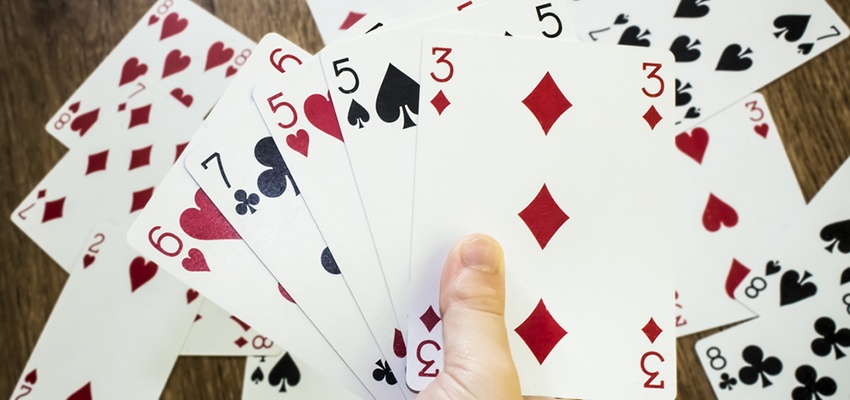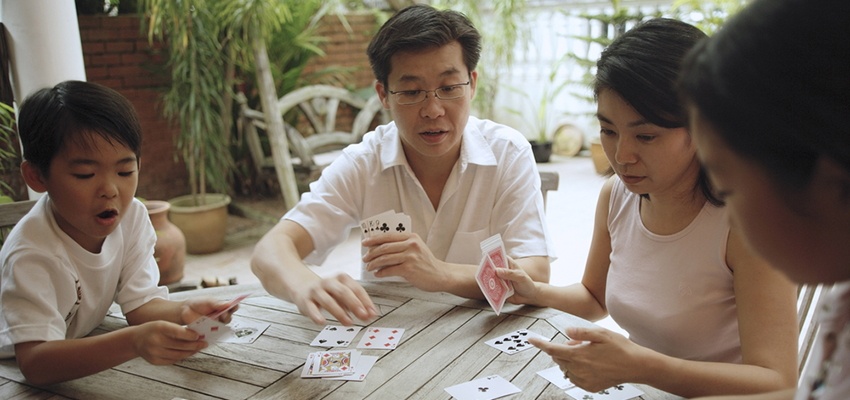Let the Kids Learn Arithmetic Using Math Games With Cards
For reasons recognized by many, math is not the most popular subject among students. We would often hear the adjectives “boring,” “uninteresting,” or “difficult” used in relation to it. That prevailing notion makes it doubly hard for math teachers to do their job. As parents, you are also faced with a dilemma: How can you encourage your child to enjoy mathematics when you don't even want something to do with it yourself?
Our society may have turned a blind eye to this, but learning first-grade math concepts such as arithmetic and number sense is crucial to a child's development. According to Nicola Ann Salvatico, the Pennsylvania Teacher of the Year in 2005, ‘first-grade math initiates the connection between the real world and the child's point of view.’
With that, we go back to the elephant in the room. How do we make math more exciting for the kids and therefore, open up a whole new world of learning for them? Well, have you considered using playing cards?
Is Using Playing Cards a Good Way to Build Math Skills?

Exposing your child to playing cards very early may raise some eyebrows, but it does more good than harm. Allowing the children to dabble with playing cards help them cultivate life skills and develop their dexterity, hand-eye coordination, and emotional intelligence.
And then, there are playing cards that aim to sharpen kids' arithmetic skills. It may be different strokes for different folks, but children are naturally competitive and love to play games. Why not use these instinctive tendencies and stimulate their appetite for mathematics in this way?
If you want to check out this method, here are five simple and fun math card games for kids. These math games with cards are an excellent addition to your game night or any random study night, for that matter.
5 Math Card Games That Children Will Truly Enjoy
-
Red or Black
Besides the standard 52-deck card, the players need paper and a pencil because this game requires manual subtraction and addition. Red or Black is best played by two or four players since the deck should be evenly split among the participants.

The play begins with each player's stack of cards facing down the table. Each of the players starts with a score of 10 written at the top of the paper. Each player flips the top card and adds the corresponding value of the cards.
Now, here's the catch: You may opt to score the Face Cards however you want, depending on the age of the participants. For first-graders, you probably want to ease up a little bit and score a 10 for all face cards.
The red cards are added to the player's score while the black ones are subtracted. This method continues until all the cards on the stack are flipped up. The winner is the person with the highest score at the end.
-
Race to 100
The name of the game says it all. And the beauty of Race to 100 is it can accommodate as many as six to eight players. Flip the facedown cards and add the value to a running total. The first player to reach 100 without going over (or as close to 100) wins the game.
-
Quick Draw

Quick Draw is a game that could be done with either subtraction or multiplication. It is best to use only two players for this game.
Gameplay: One card each is dealt to both players. When one player says 'Draw,' the other player flips over their top card and places it face-up in the center. The players add (or multiply) the two numbers and the first to call out the total wins the two cards.
After all of the cards have been used, the players count how many cards they have won. The person with the most cards is declared the winner.
-
21
A game of 21 is a watered-down game of Blackjack, without the bets of course.
The goal of the game is to get as close to 21 as possible. Number cards are worth their face value, while the Face Cards are worth ten. The ace can be either 1 or 11, and the player who holds it gets to choose the card's value. The dealer and each of the other players is dealt two cards.
Excluding the dealer, all of the players' cards are revealed face up. The dealer has one face-up card and one face-down card. The dealer goes around the table, one by one, to each player. The player must decide whether to take another card (hit) or sit on what they have. You can have as many cards as you want as long as your total does not exceed 21.
Not only does this game teach kids basic addition, but it also introduces them to the concept of odds and probability.
-
Practice Counting

Since the game's purpose is to sharpen a child's counting skills, you may have players as young as 3 or 4.
For this one, discard the face cards and grab a die. Players take turns flipping a card and rolling a die. They "count on" using the number on the die, beginning with the number on the card. For example, if a player flips a 5 and rolls a 3, they would say, "Five... six... seven... eight." If a player gets it right, he or she keeps the card. The one with the most cards in the end wins.
Final Thoughts: Math Card Games for Kids

It is no secret that effective mathematics instruction stems from effective teaching. More often than not, teaching involves more than just writing things on the whiteboard and expecting children to grasp them. Also critical is piquing a child's interest in the subject that may otherwise be difficult or tiresome.
With that being said, how do you encourage children to enhance their arithmetic skills? You may have not thought about this before as a teacher or a parent, but playing cards could help. As far as kids are concerned, learning and studying disguised as playtime fun could be the key to a lifetime full of math adventures!


